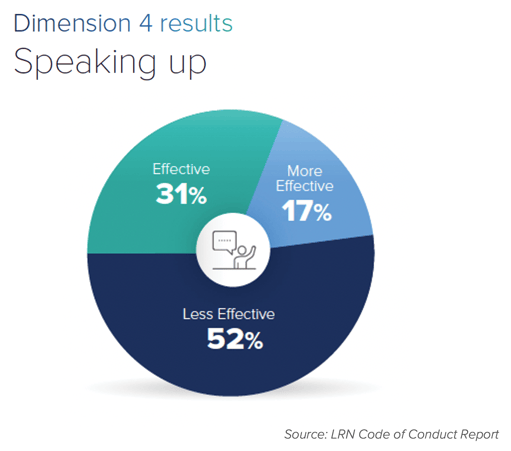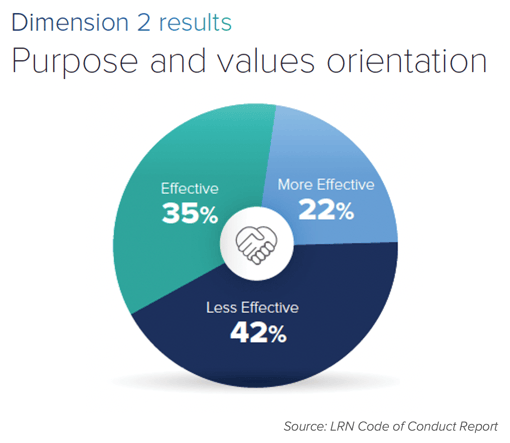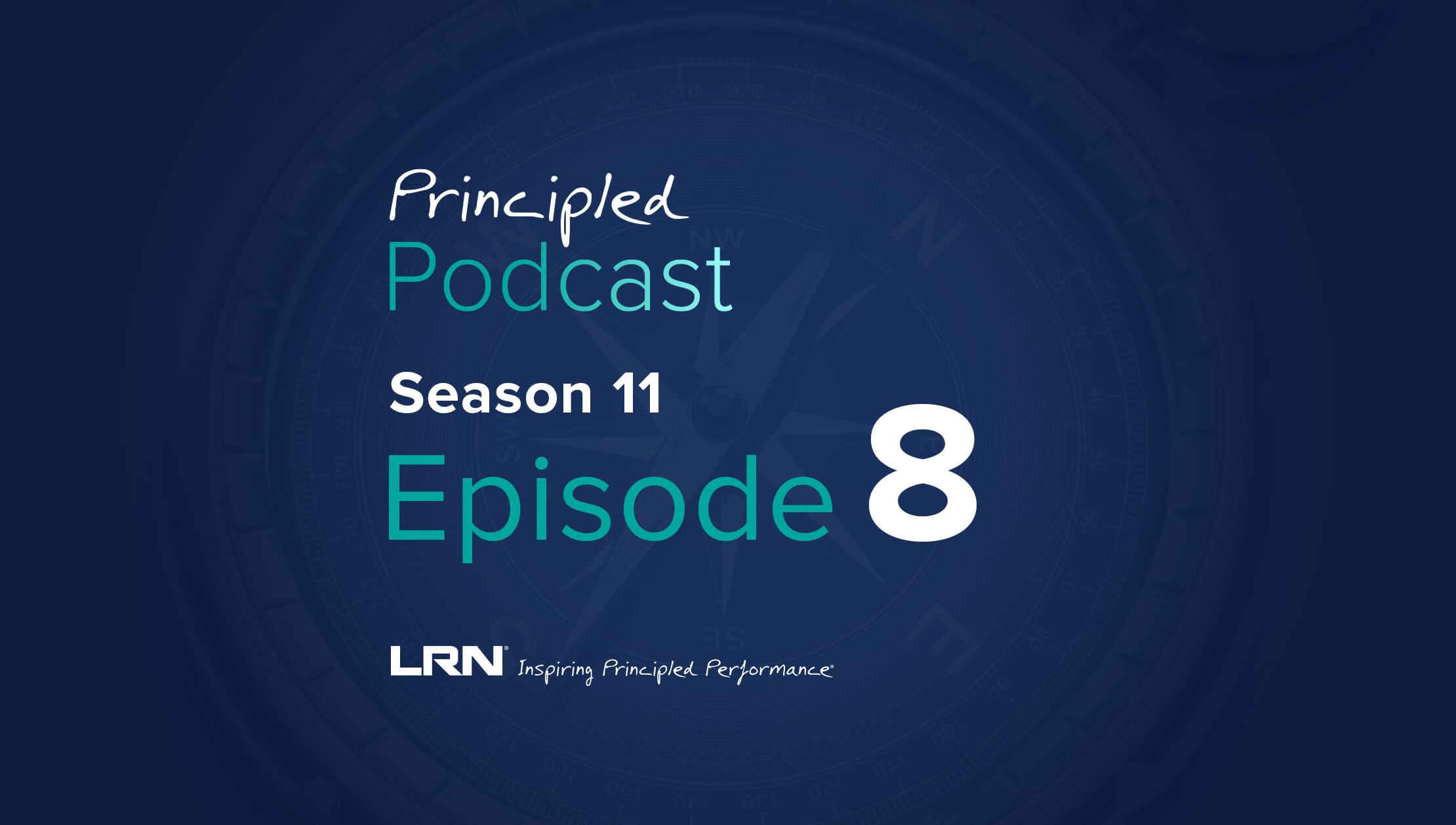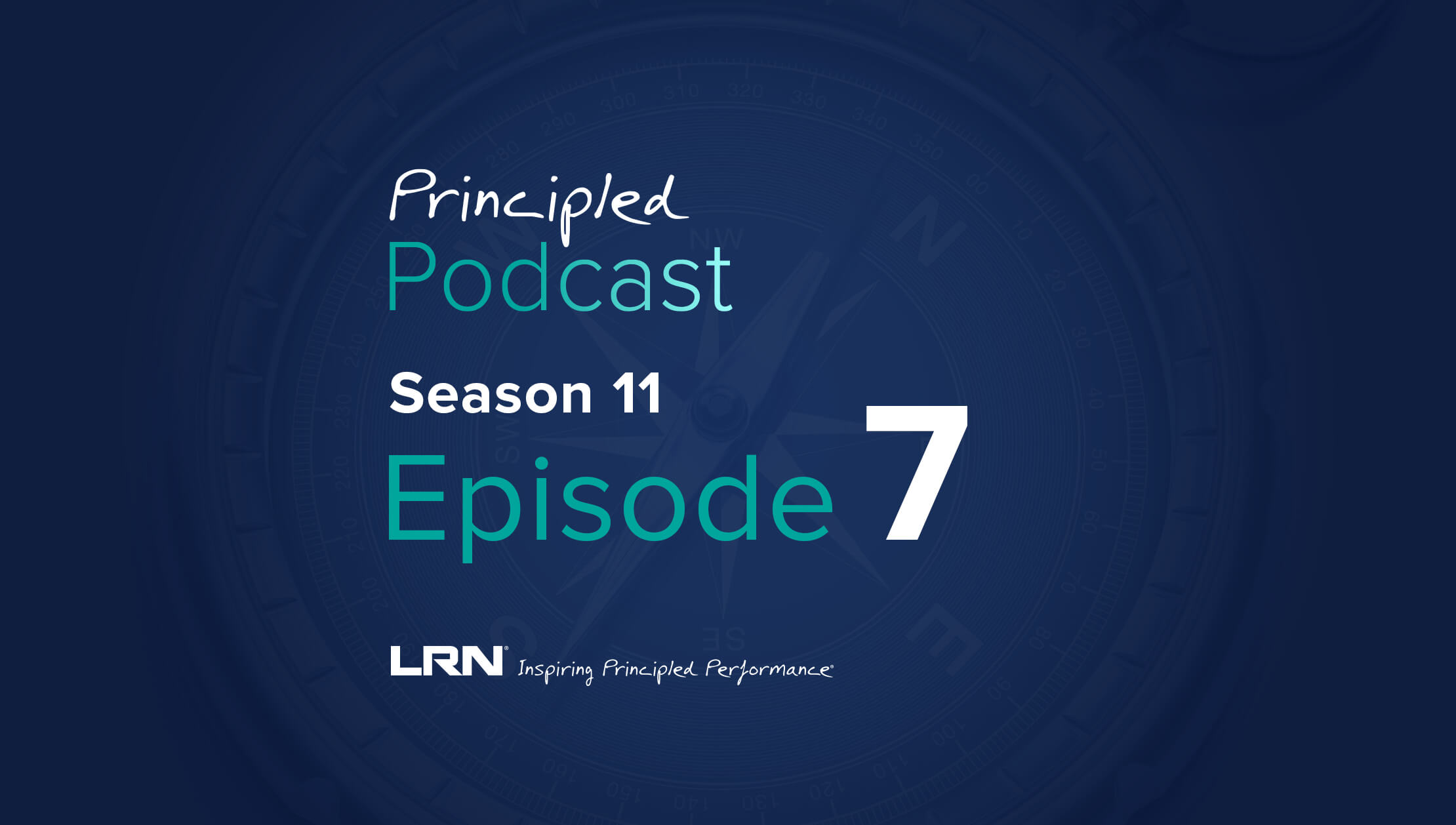An ethical code of conduct is a document that articulates who you are, what you believe, and why you are in business. It provides a reference and resource for employees seeking to succeed in their work. It offers an inside look for prospective employees and other stakeholders to get a sense of a company’s corporate character. However, a code isn’t static or dense. It should be visually engaging, readable, and useful to employees as guides to help them make ethical decisions and do the right thing.
The beginning of the year is a common time for companies to review their codes of conduct and determine what needs updating or improvement. But what if you’re not sure where to begin? To identify gaps in ethical code of conduct development and provide actionable practices for code effectiveness, LRN assessed nearly 150 codes of conduct from some of the top companies headquartered in Europe and the United States. The result of our research, the LRN Code of Conduct Report, looks at company codes from the top 40 organizations in the CAC (France), DAX (Germany), FTSE (UK), and S&P (USA) stock exchange listings.
So, what should compliance professionals know about refreshing a code of conduct in 2023? Using insights from the LRN Code of Conduct Report (which you can download in full here), we’ve pinpointed three dimensions for E&C teams to address right now in their codes. Take a look below for best practices along with supporting data and examples of codes that tackle each focus area effectively. The report outlines eight dimensions of code of conduct effectiveness and measures whether these codes were Effective, More Effective, or Less Effective than standard.
Reinforce knowledge of code policies, procedures, and other key information

The insight: More and more, codes of conduct are becoming useful resources for employees to come back to time and again to find the information they need to make ethical decisions and do the right thing.
The data: The LRN Code of Conduct Report found that “Knowledge Reinforcement” is the dimension with the most room for improvement—with only 9% of codes rated in the More Effective category. Less than one-quarter of codes (24%) were in the Effective category, and the majority of codes (52%) fell into the Less Effective category.
What it means: The best codes integrate learning aids, such as real-life scenarios, ethical decision-making models, and links to policies and other resources such as training and videos. The objective is to help bring to life the concepts outlined in the code.
A great example: Curious what a good example of knowledge reinforcement looks like? Check out Air Liquide’s code, which scored highest on this dimension, as well as other good ethical code of conduct examples.
Encourage speaking up (and include resources to do so) in your code of conduct

The insight: Having an accessible reporting process, including a helpline available wherever your company operates, reinforces the importance of asking questions, seeking advice, and raising concerns. By summarizing the reporting channels available to employees—and describing what happens when concerns are raised—codes of conduct can help foster trust and transparency.
The data: According to the report, 73% of all codes have a section on speaking up, including 100% of More Effective Codes. However, the majority of codes analyzed in the report (52%) fell into the Less Effective category when it came to the “Speaking Up” dimension—a sign that there is room for improvement.
What it means: Your code of conduct should include multiple resources for asking questions, raising concerns, and reporting potential violations. Be sure to address anonymous reporting and the extent to which confidentiality can be maintained. Make it very clear that retaliation is itself a violation of the ethical code and will result in disciplinary action.
A great example: Amgen’s ethical code scored highest on the “Speaking Up” dimension. We break down why it works and what could be improved.
Operationalize your company purpose and values in the code of conduct

The insight: With the growing focus on ESG, many companies are focusing more and more on their organization’s purpose and values. The code of conduct is a natural vehicle for “operationalizing” an organization’s purpose and values by breaking them down into specific behavioral expectations for how employees treat one another, customers, and the communities they serve.
The data: Although most codes analyzed in the report (42%) were categorized as Less Effective in the “Purpose & Values Orientation” dimension, the vast majority of all codes still referenced organizational values (70%) as well as their organizations’ purpose (59%). Meaning, there is an opportunity to strengthen this section of the code.
What it means: Make values the centerpiece of your code and infuse them throughout the document. Explain how the code heightens employee risk awareness, enhances decision-making, and helps strengthen culture. Create a unique theme that ties together your organization’s brand, business, values, and commitment to doing business the right way.
A great example: Take a look at the Barclays Code of Conduct, which scored highest on the “Purpose & Values Orientation” dimension.
The key takeaway
Effective ethical codes of conduct provide a behavioral framework for individual business professionals, teams, leaders, and organizations regardless of affiliation, level, or geography. They also leverage advanced technology for easy access, better employee engagement, and just-in-time insights for navigating the grey areas that are inevitable in the new world of work. Download a copy of the LRN Code of Conduct Report for more best practices on refreshing your code of conduct.



